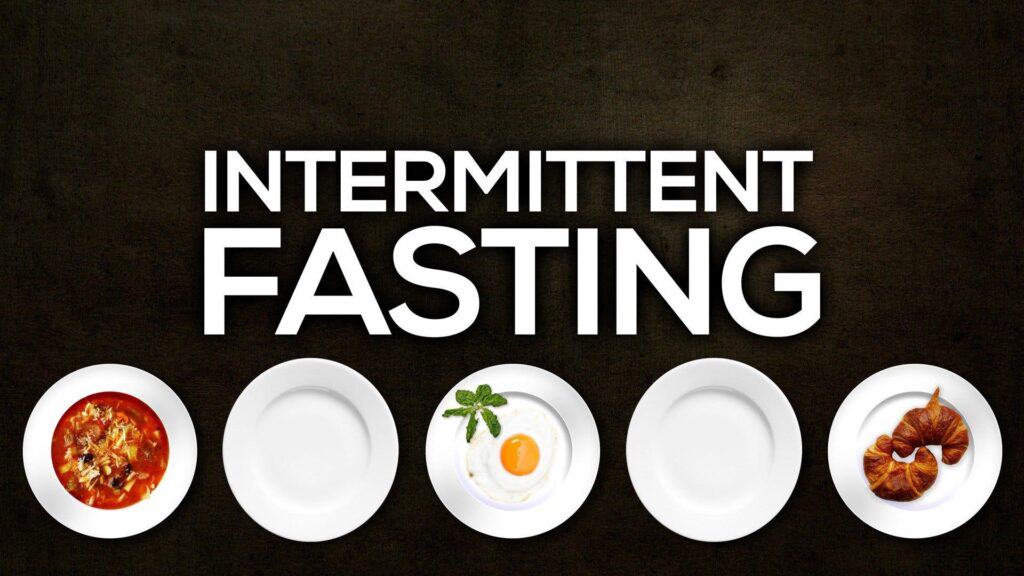
Intermittent Fasting (IF) is not just a dietary trend; it’s a scientifically-grounded approach to nutrition and health that has gained significant popularity in recent years. At the forefront of this movement is Dr. Jason Fung, a renowned nephrologist and prolific author. Dr. Fung’s extensive expertise in fasting, low-carb diets, and the treatment of type 2 diabetes has made him a prominent figure in the field of nutritional science.
In this comprehensive blog post, we delve into the world of intermittent fasting, drawing insights and knowledge from Dr. Jason Fung’s authoritative works, “The Complete Guide to Fasting: Heal Your Body Through Intermittent, Alternate-Day, and Extended Fasting” and “Life in the Fasting Lane: How to Make Intermittent Fasting a Lifestyle—and Reap the Benefits of Weight Loss and Better Health.” These books serve as our primary references, ensuring that the information presented here is not only informative but also scientifically sound.
Table of Contents
What is Intermittent Fasting?
Intermittent Fasting is a structured dietary strategy that involves alternating periods of fasting (abstaining from calorie intake) with periods of eating, typically on a daily or weekly basis. It is not defined by specific food restrictions but rather by specific time windows during which food consumption is allowed.
What are the benefits of Intermittent Fasting?
Intermittent Fasting (IF) has gained popularity due to its potential health benefits, supported by scientific research and the work of experts like Dr. Jason Fung. Here is a comprehensive list of some of the potential benefits of IF:
- Weight Loss: IF can help individuals reduce calorie intake and create a calorie deficit, leading to weight loss. It also promotes the loss of fat while preserving lean muscle mass.
- Improved Insulin Sensitivity: IF may enhance insulin sensitivity, reducing the risk of type 2 diabetes and helping manage blood sugar levels more effectively.
- Reduced Inflammation: IF may reduce markers of inflammation in the body, potentially lowering the risk of chronic inflammatory conditions.
- Heart Health: IF may improve cardiovascular health by reducing risk factors such as high blood pressure, cholesterol levels, triglycerides, and oxidative stress.
- Enhanced Autophagy: Fasting can stimulate autophagy, a process that removes damaged cells and cellular components, contributing to overall cellular health and longevity.
- Cellular Repair: During fasting, the body initiates processes like autophagy and DNA repair, promoting cellular maintenance and repair mechanisms.
- Longevity: Some animal studies suggest that IF may increase lifespan by promoting cellular health and metabolic efficiency.
- Brain Health: IF may support brain health by promoting the production of brain-derived neurotrophic factor (BDNF), which is associated with cognitive function and reduced risk of neurodegenerative diseases.
- Mood Regulation: Fasting can positively impact mood and reduce symptoms of depression and anxiety in some individuals.
- Improved Fat Metabolism: IF can enhance the body’s ability to burn fat for energy, potentially aiding in weight loss and improved metabolic health.
- Appetite Control: IF may help regulate hunger hormones, leading to reduced appetite and easier calorie control.
- Cancer Prevention: Some studies suggest that IF may reduce the risk of cancer by slowing the growth of cancer cells and enhancing the body’s ability to repair DNA damage.
- Gut Health: IF can support gut health by allowing the gut to rest between meals, potentially improving digestion and reducing gut-related issues.
- Better Sleep: Some individuals experience improved sleep quality and patterns when following an IF regimen.
- Enhanced Athletic Performance: IF may promote fat adaptation and improve endurance in some athletes.
- Simplicity and Convenience: IF can be a straightforward dietary approach, eliminating the need for complex meal planning and frequent eating.
- Metabolic Flexibility: IF can improve the body’s ability to switch between burning carbohydrates and fat for energy, enhancing metabolic flexibility.
- Hormonal Regulation: IF may lead to improved hormone regulation, including increased growth hormone levels, which can have various health benefits.
- Weight Maintenance: After weight loss, IF can help individuals maintain their lower weight more effectively than continuous calorie restriction.
- Lifestyle Adaptability: IF can be tailored to fit various lifestyles, making it adaptable for many people.

How to apply Intermittent Fasting?
Intermittent Fasting (IF) encompasses several different approaches, each with its own variation in terms of fasting and eating windows. Here are some of the most common types of IF:
- Time-Restricted Eating (TRE): This approach involves daily fasting and eating within a specific time window. A popular example is the 16/8 method, where you fast for 16 hours and eat during an 8-hour window.
- Alternate-Day Fasting (ADF): ADF alternates between days of regular eating and days of fasting or consuming very few calories. Some variations allow for limited calorie intake on fasting days.
- 5:2 Diet: In the 5:2 diet, individuals eat normally for five days a week and significantly reduce calorie intake (usually around 500-600 calories) on two non-consecutive fasting days.
- Eat-Stop-Eat: In this approach, you have 24-hour fasting periods once or twice a week, where no calories are consumed during the fasting window.
- The Warrior Diet: The Warrior Diet involves fasting for 20 hours and eating during a 4-hour window in the evening. It often encourages consuming small amounts of raw fruits and vegetables during the fasting period.
- Extended Fasting: Extended fasting typically involves fasting for longer durations, such as 48 hours, 72 hours, or even several days. Extended fasts require careful planning and monitoring.
- OMAD (One Meal a Day): OMAD involves eating only one large meal during a 1-hour to 4-hour window each day, with an extended fasting period between meals.
- The 36-Hour Fast: This approach requires fasting for a full 36 hours, typically from dinner one day to breakfast two days later.
- ADF with Modified Fasting: Some variations of alternate-day fasting allow for a reduced calorie intake (e.g., 500 calories) on fasting days to make the approach more sustainable.
- The 5:1 Approach: In this version, you follow a regular eating pattern for five days a week and take one full day off from eating each week.
What can you consume during intermittent fasting?
Intermittent Fasting (IF) primarily focuses on when you eat, rather than what you eat. However, it’s essential to understand what can be consumed during fasting periods without breaking the fast. Here’s a list of things you can typically consume during an IF fasting window:
- Water: Plain water is the most important and encouraged beverage during fasting. Staying hydrated is essential, and water does not interfere with fasting.
- Unsweetened Tea and Coffee: Black coffee and plain tea (green, black, herbal) without added sugar, cream, or milk are generally acceptable during fasting. They can help curb appetite and boost alertness.
- Water with Lemon or Apple Cider Vinegar: Adding a small amount of lemon juice or apple cider vinegar to water is usually allowed and may even have potential health benefits.
- Electrolytes: Some people find it beneficial to consume electrolyte supplements or beverages during extended fasts to maintain electrolyte balance. However, it’s essential to choose products without added sugars or calories.
- Bone Broth: Bone broth is a low-calorie, nutrient-rich option that some individuals include in their fasting regimen. Be sure to choose a low-sodium variety.
- Fasting-Friendly Supplements: Certain supplements, like vitamins or minerals, can be taken during fasting as long as they don’t contain calories. Check the labels for any fillers or additives.
What should you avoid during intermittent fasting?
- Caloric Foods and Beverages: The primary goal of fasting is to abstain from calorie intake, so avoid foods and beverages that contain calories. This includes sugar, cream, milk, and any other sources of significant calories.
- Sweeteners: Artificial or natural sweeteners, such as sugar, honey, agave nectar, and stevia, should be avoided as they can trigger an insulin response and interfere with the fasting state.
- Protein and Carbohydrate-Rich Foods: Any foods that contain substantial protein or carbohydrates should be avoided during fasting as they can stimulate an insulin response and halt the fasting benefits.
- Alcohol: Alcoholic beverages contain calories and can interfere with the fasting process. Avoid alcohol during fasting periods.
Summary
In this practical guide to Intermittent Fasting (IF), we explore the scientifically grounded approach to nutrition and health, drawing insights from Dr. Jason Fung’s authoritative works: “The Complete Guide to Fasting” and “Life in the Fasting Lane.” IF, a dietary strategy focusing on when you eat, offers numerous potential benefits, including weight loss, improved insulin sensitivity, reduced inflammation, and enhanced cellular repair.
We cover the fundamentals of IF, its various forms (such as time-restricted eating and extended fasting), and practical tips for making IF a sustainable lifestyle choice. Along the way, we delve into the science behind IF, its impact on different aspects of health, and how it can be tailored to individual needs.
However, before beginning an Intermittent Fasting regimen, consult with a healthcare professional, especially if you have medical conditions or specific dietary requirements. The information provided here is for general informational purposes and should not replace personalized medical advice. Individual responses to IF can vary, and safety considerations are paramount. Always prioritize your health, and any dietary changes should be made under professional guidance.
